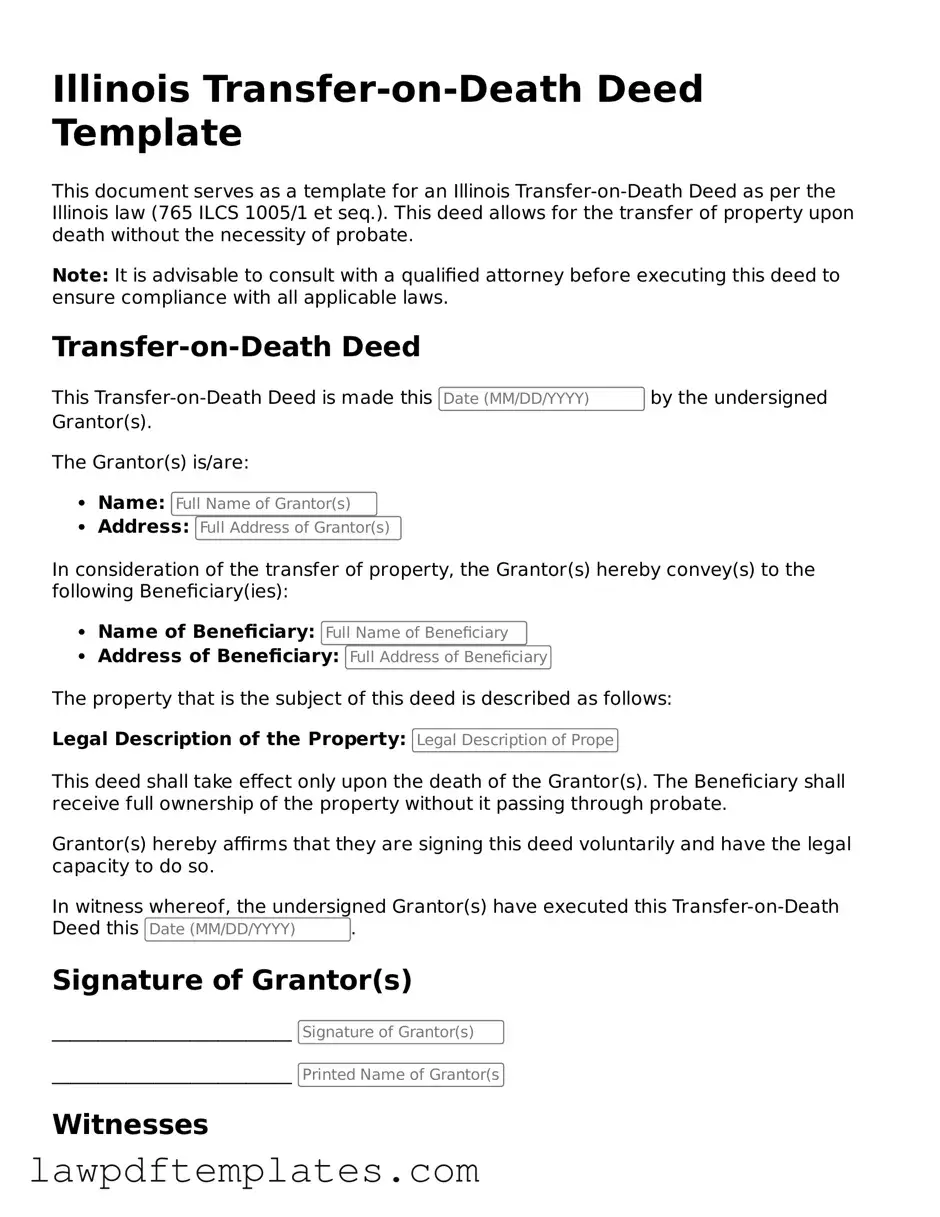Free Transfer-on-Death Deed Template for the State of Illinois
The Illinois Transfer-on-Death Deed form allows property owners to transfer their real estate to designated beneficiaries upon their death, bypassing the probate process. This legal tool provides peace of mind, ensuring that loved ones receive property without unnecessary delays. For those considering this option, filling out the form can be a straightforward step toward securing your wishes.
Take action today by filling out the Transfer-on-Death Deed form. Click the button below to get started.
Get My Transfer-on-Death Deed
